Galaxy Fold vs. Huawei Mate X: Which Foldable Phone Will Win?
The Galaxy Fold and Huawei Mate X will both transform from phone to tablet with their flexible screens, but they are very different foldable beasts.
Editors' Note: Updated April 23, after Samsung indefinitely delayed the Galaxy Fold's launch.
Samsung and Huawei now find themselves in a foldable phone race. The two phone makers have each unveiled their own foldable devices — the Galaxy Fold for Samsung, and the Mate X for Huawei — though it will be a longer wait than we thought for the showdown to begin.
Samsung was to have launched the Galaxy Fold on April 26, even taking pre-orders for its new phone. But Samsung has since delayed the Fold's launch after reviewers ran into problems with some test units. Samsung hasn't set a new launch date for the Fold, as it's still investigating what caused problems with the device's screen. Meanwhile, the Mate X is supposed to launch by midyear, with reports out of China saying Huawei's phone is on track for a June launch.
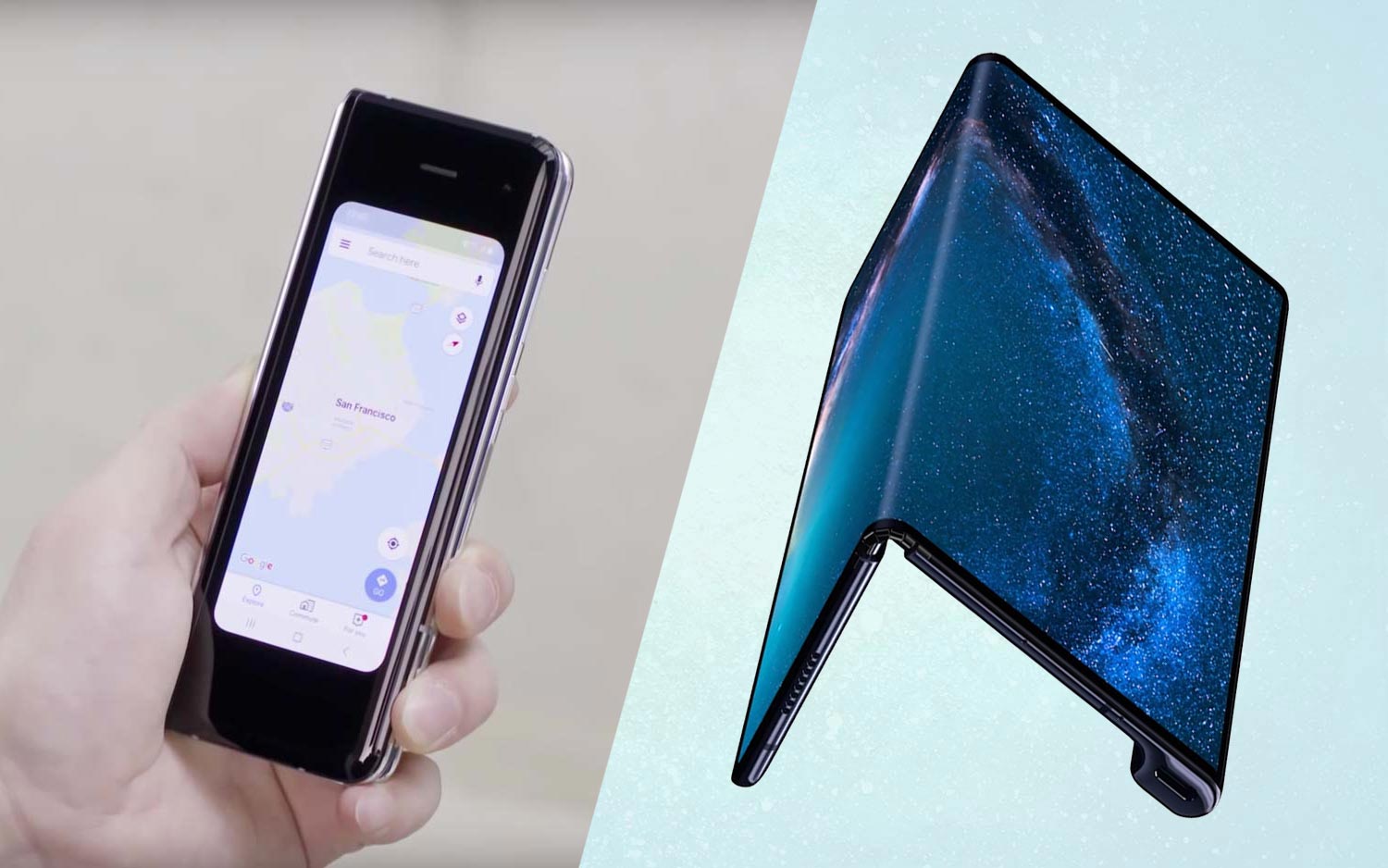
We can't say which phone will be superior until have a chance to use both phones. (We have had a chance to review the Galaxy Fold, and we didn't run into the problems with the screen that some other reviewers reported.) Still, based on what we've seen so far, we can draw some comparisons as to what you can expect.
Here's how the Galaxy Fold and Mate X compare.
| Samsung Galaxy Fold | Huawei Mate X | |
| Price | $1,980 | €2,299 |
| Unfolded Screen Size (Resolution) | 7.3 inches (2152 x 1536) | 8 inches (2480 x 2200) |
| Folded Screen Size (Resolution) | 4.6 inches (1960 x 840) | 6.6 inches (2480 x 1148), 6.4 inches (2480 x 982) |
| CPU | Snapdragon 855 | Kirin 980 |
| RAM | 12GB | 8GB |
| Storage | 512GB | 512GB |
| Expandable? | No | Yes, up to 256GB |
| Cameras | 3 rear (12-, 12- and 16-MP); 1 front (10-MP); 2 inside (10- and 8-MP) | 40 MP (wide-angle), 16 MP (ultra-wide-angle), 8 MP (telephoto) |
| Battery | 4,380 mAh | 4,500 mAh |
| Size (Folded) | 6.3 x 2.5 x 0.66 inches | 6.4 x 3.1 x 0.43 inches |
| Weight | 9.48 ounces | 10.4 ounces |
| Colors | Space Silver, Cosmos Black, Martian Green and Astro Blue | Interstellar Blue |
| Availability | Unknown | June 2019 |
Display
Any comparison between the Galaxy Fold and the Mate X has to start with the screens on the two foldable phones. When extended, the Galaxy Fold gives you a 7.3-inch OLED screen with 2152 x 1536 resolution. Unfold the Mate X, and you're left with an 8-inch OLED panel with a sharper 2480 x 2200 resolution.
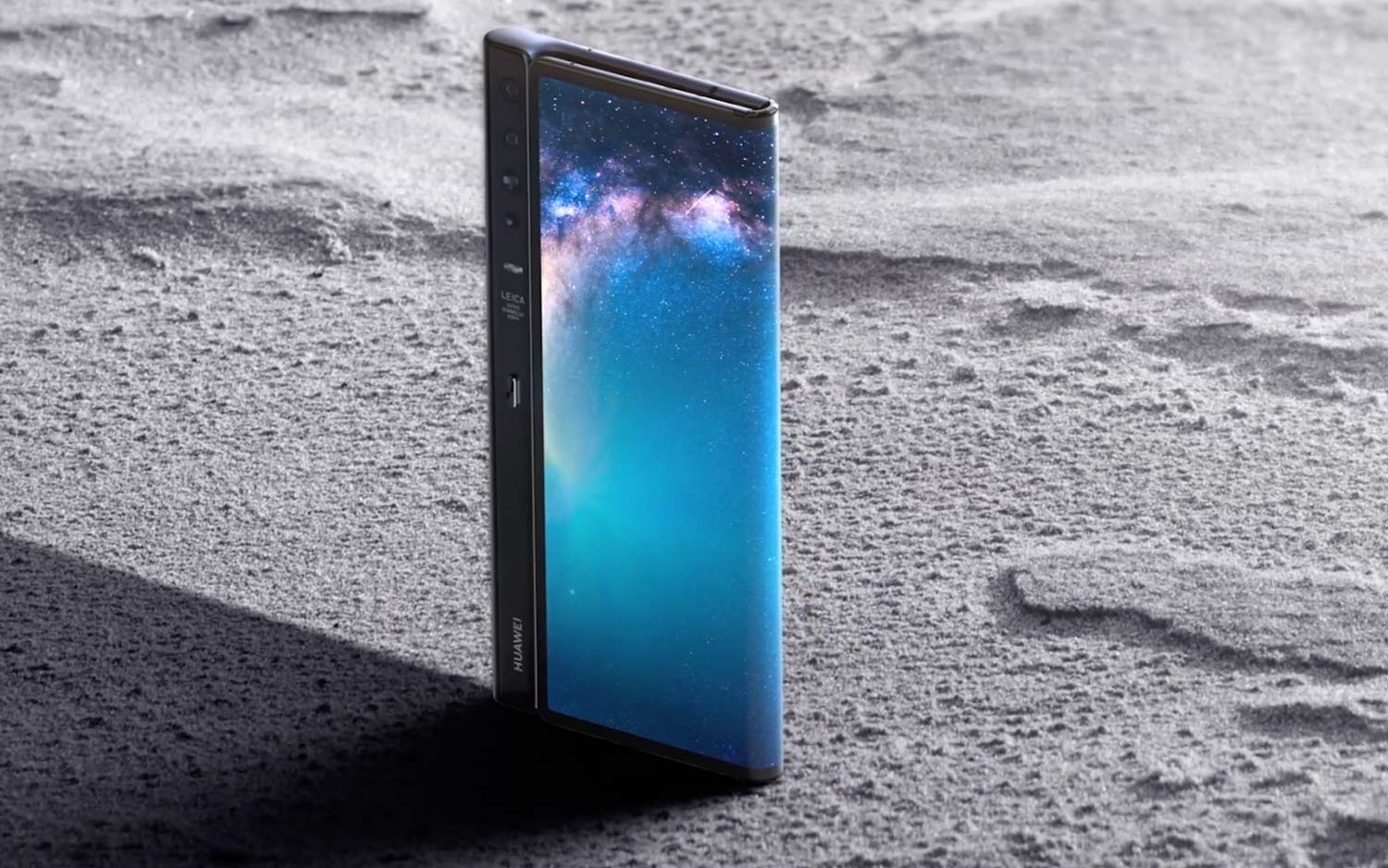
Folded up, the two devices also offer a contrast in screens. The Galaxy Fold features a single and quite small, 4.6-inch panel with HD+ resolution. You actually get two screens because of the way the Mate X folds — a front-facing 6.6-inch display (2480 x 1148) and a 6.4-inch screen (2480 x 982) on the back of the device. That back panel can come in handy, as you can use it as a mirror when you're snapping a photo with the Mate X's cameras, so that your subjects can see what they look like.
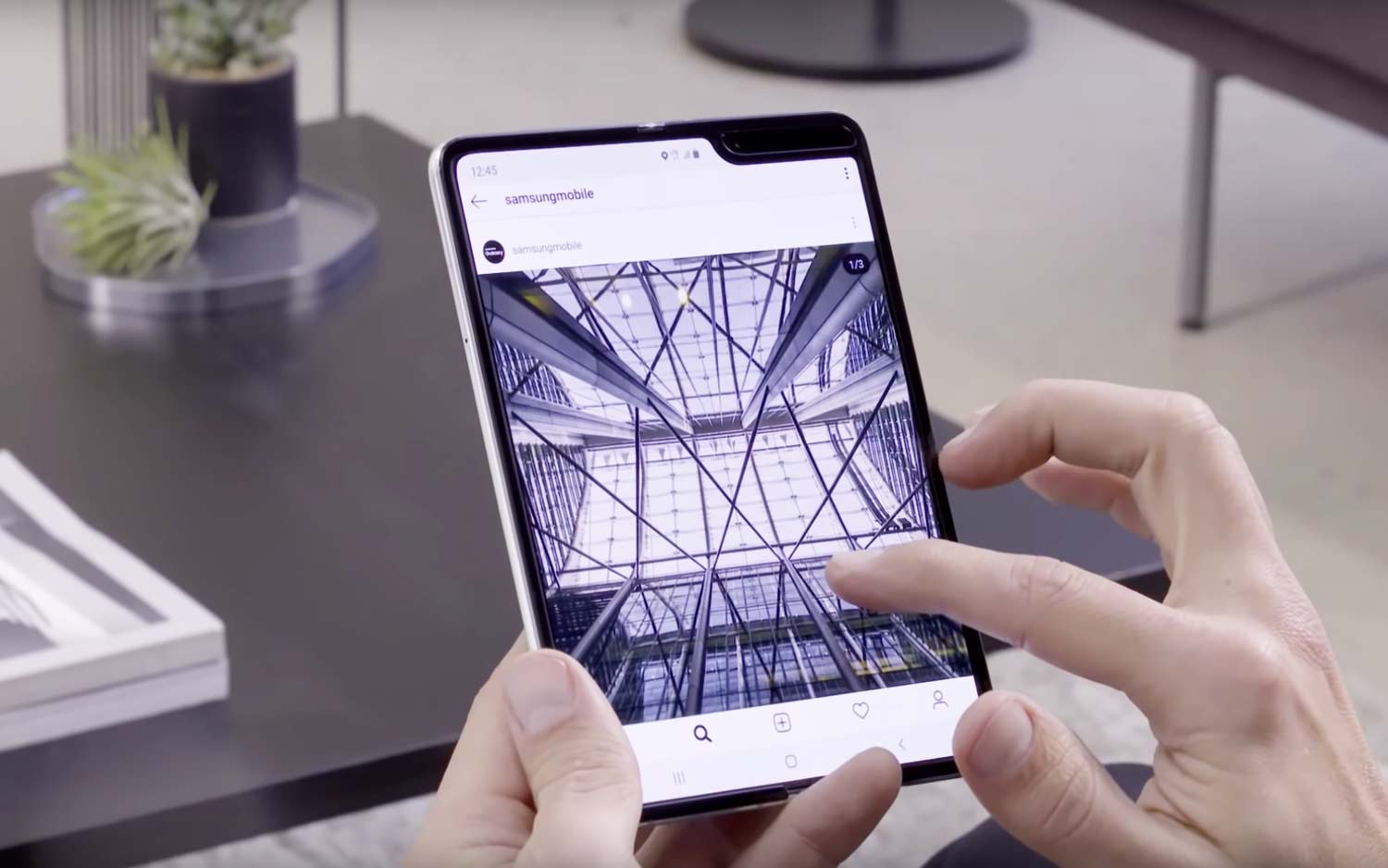
The different screen real estate reflects the different approaches Samsung and Huawei have taken with their phones. The Galaxy Fold opens like a book on a hinge, with the 7.3-inch main display tucked inside and the 4.6-inch panel on the outer cover. To get the larger screen on the Mate X, you fold the front and rear displays into each other. You press a button to unhinge the screen so that it folds out.

It's worth noting that there's a small gap between the front and back covers of the Galaxy Fold when it's folded up. The Mate X's screens lie flat against one another, thanks to a handle that also houses the phone's circuits, cameras and USB Type-C port.
We've only gotten to see the Mate X in hands-on demos with Huawei, while we've had a chance to put the Galaxy Fold to the test as part of our review. That 4.6-inch outer screen is very tiny, especially when compared to today's popular smartphones and their 6-inch or larger screens. Because the Fold's small screen is narrow, too, it's pretty tough to type on.
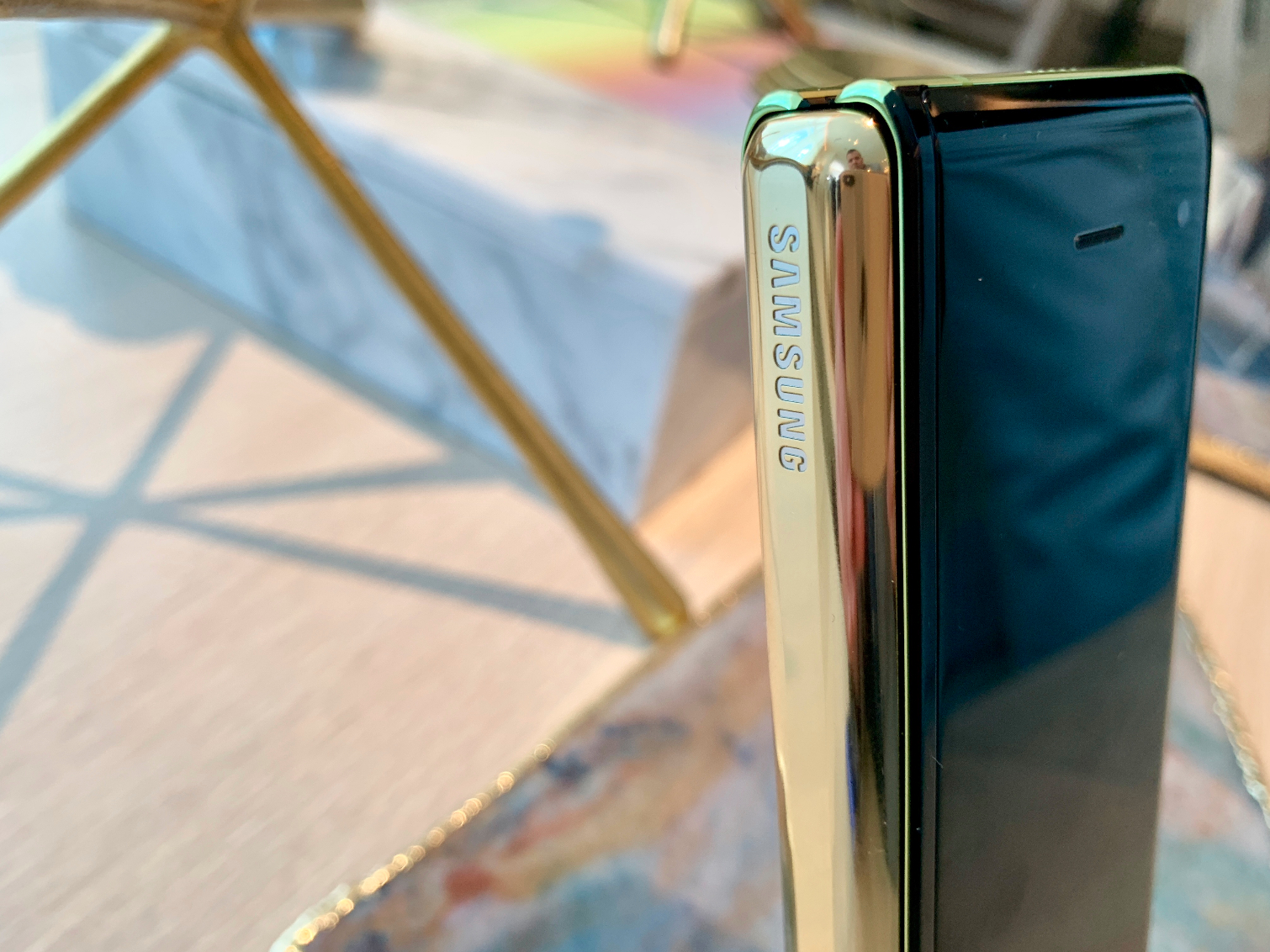
Opening up the Fold is a different story. That 7.3-inch screen gives you a lot of room to work on, and we found ourselves able to do everything from watch videos to work on articles in the Tom's Guide content management system (something we would never dream of doing on a regular-sized phone).
Yes, there's a crease down the front of the Galaxy Fold's main screen, and it's visible when you're using apps with light backgrounds. We didn't find it too distracting, though, especially when viewing the Fold head on. For what it's worth some users have spotted the same issue with the Mate X, though we won't be able to confirm that until we get more time with Huawei's device. Blame the creases on the plastic displays the two phones have to use, as flexible glass for foldable phones is still a little ways off.
Now to the elephant in the room — the problems with the Galaxy Fold's display that some early reviewers have run into and which have forced Samsung to delay the Fold's launch. Some of those issues are self-inflicted as two reviewers mistakenly removed a protective layer over the Fold's display that affected performance. (That the layer was so easy to remove raises concerns about the Fold's design that Samsung will need to address before the phone is released.) In other instances, Samsung said problems with the display "could be associated with impact on the top and bottom exposed areas of the hinge. There was also an instance where substances found inside the device affected the display performance."
MORE: Despite Galaxy Fold Debacle, Foldable Phones Will Rise
Design
The Galaxy Fold is fairly bulky, at 6.3 x 2.5 x 0.66 inches. That 0.66-inch thickness is particularly noteworthy, as it makes it hard to slip the phone into your pocket (unless we're talking coat pockets). Compare that to the Mate X, which measures 6.4 x 3.1 x 0.43 inches. That thinness — 11mm when folded, according to Huawei — is a significant edge for Huawei.
Huawei's phone is expected to be a little heavier than the Galaxy Fold, though. The Mate X tips the scales at 10.4 ounces to the Fold's 9.48 ounces.
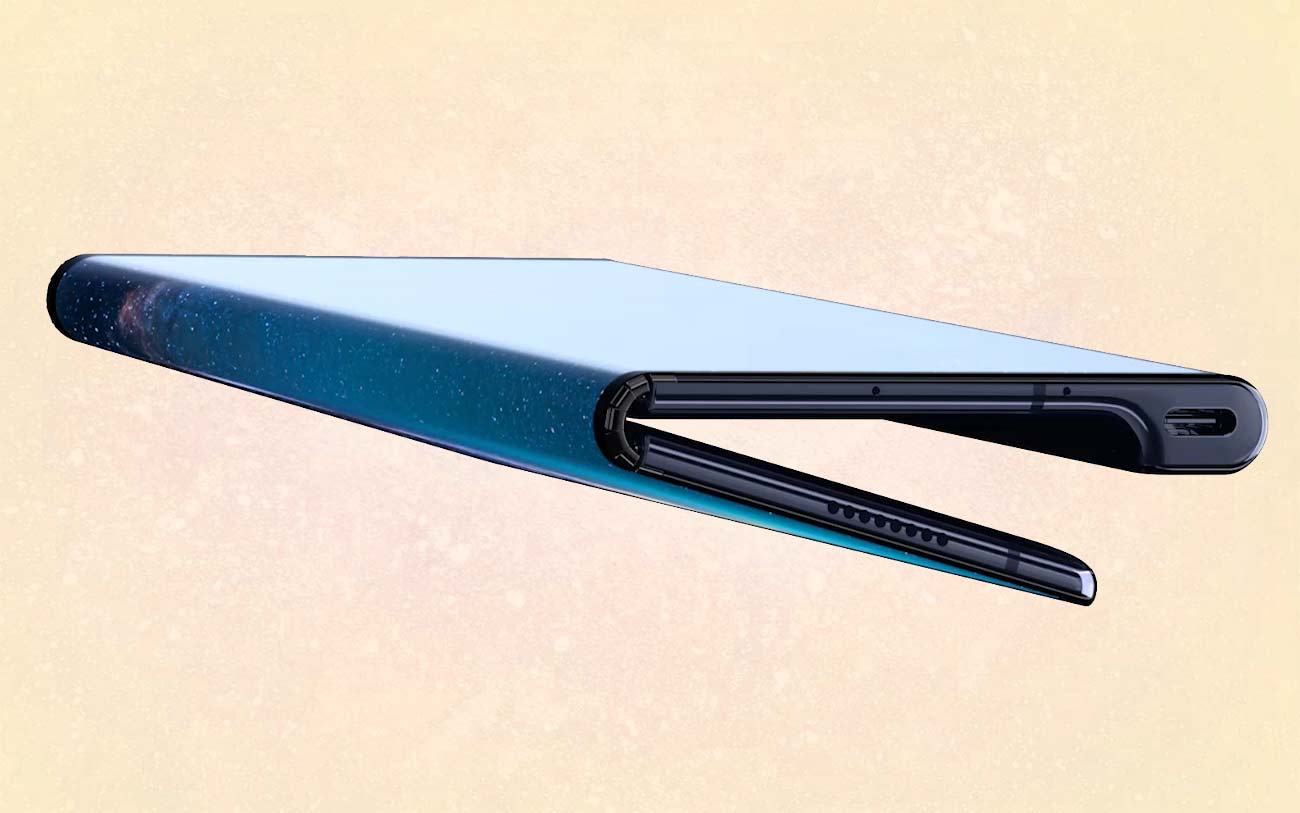
Samsung is offering more colors for the Galaxy Fold, which comes in Space Silver, Cosmos Black, Martian Green and Astro Blue. You can get the Mate X in any color you want so long as it's Interstellar Blue.
Cameras
For sheer number of lenses, it's hard to top the Galaxy Fold. On the back of the phone, you'll find three cameras — a 12-megapixel wide-angle lens, 16-MP ultrawide lens and 12-MP telephoto. That's the same setup on the back of the Galaxy S10 and S10 Plus.
When the phone's folded shut, there's a 10-MP selfie cam pointed at you. Open the Galaxy Fold, though, and two more lenses are staring back at you — a 10-MP selfie cam aided by an 8-MP depth sensor. Those two inside cameras are housed by a notch that dips into the right side of the Galaxy Fold's Infinity Flex display.
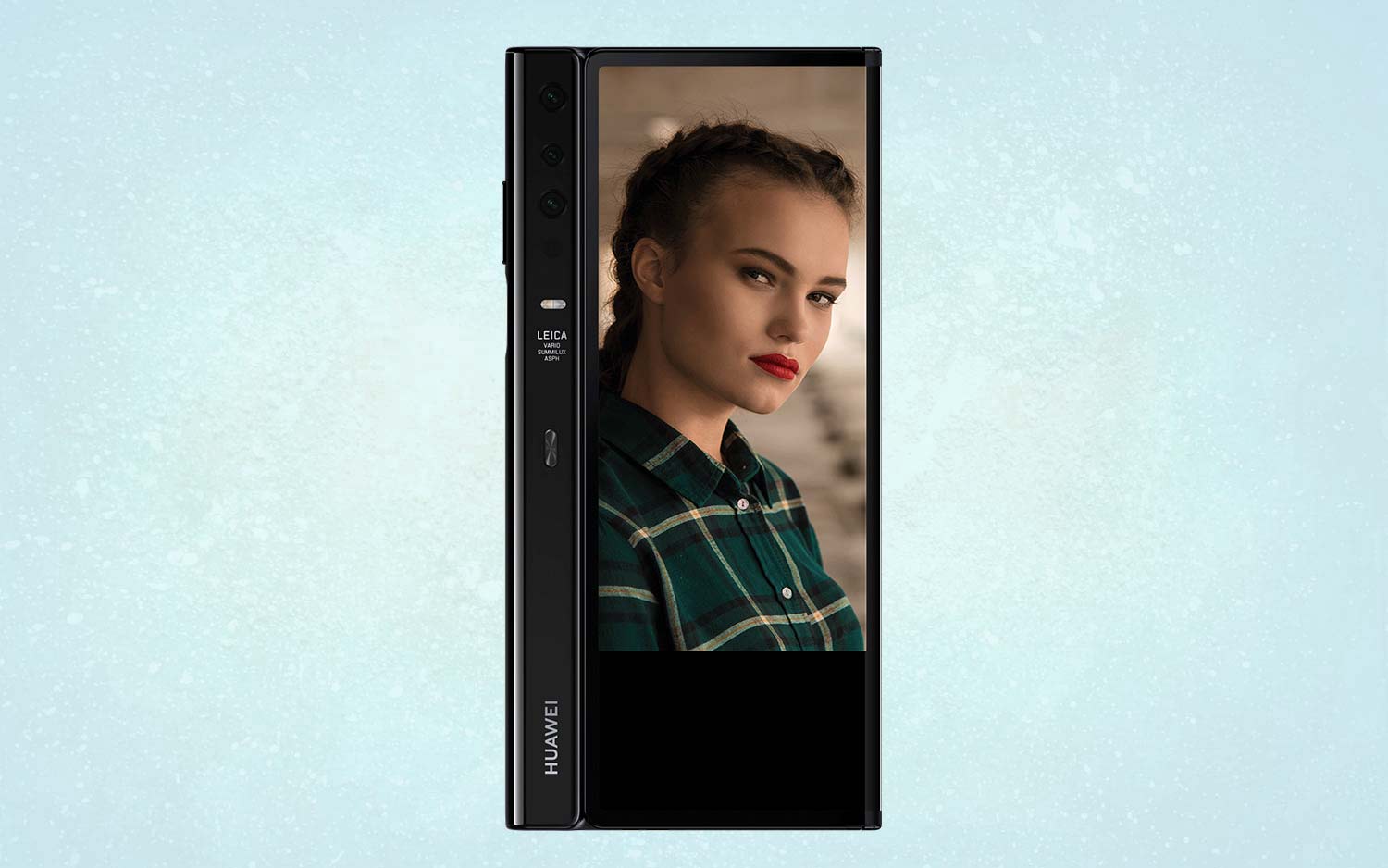
The Mate X keeps things simple, if a three-camera stack can be considered simple. Huawei didn't really talk up the cameras during our hands-on time with the Mate X, other than to say they're the same quality of lenses featured in the Mate 20 Pro. The Mate X's spec sheet notes that the phone offers a 40-MP wide angle lens, 16-MP ultra wide angle shooter and 8MP telephoto.
Unlike the Galaxy Fold, in which you're turning to different cameras depending on whether the phone is folded or opened, with the Mate X, you're using the same lenses whenever you take a picture. Because those lenses are housed in the Mate X's sidebar, they're available regardless of what orientation the Mate X is in.
Performance
The Galaxy Fold runs on a Snapdragon 855 processor, the same chipset that powers the new Galaxy S10 flagships. To bolster that mobile processor, the Fold includes 12GB of RAM. For context, that's the amount of memory you get if you shell out for the most expensive configuration of the Galaxy S10 Plus. You'll get 512GB of storage, but no microSD slot for adding on more capacity.
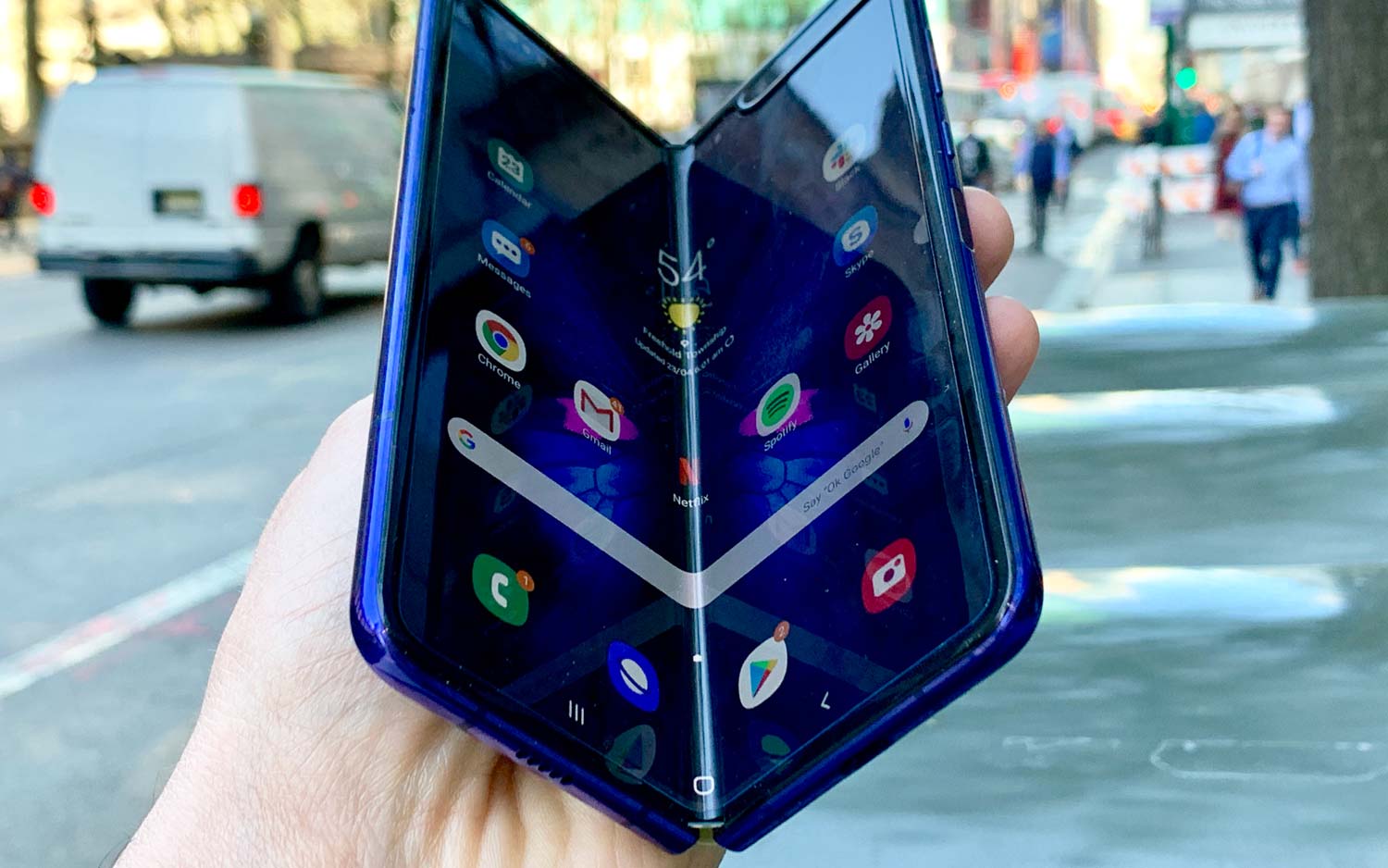
The state-of-the-art processor and extra RAM help the Fold deliver strong performance. We recorded a score of 10,593 for the Galaxy Fold on Geekbench 4, which measures overall performance. That's in line with the 10,732 score the Galaxy S10 Plus turned in, making the Fold one of the faster Android phones available. The Galaxy Fold excelled in graphics testing, too, and we didn't notice much of a lag when running multiple apps at once. There was occasionally a noticeable delay with the phone recognizing our taps on the screen, though.
Huawei will turn to its own chipset to power the Mate X. Specifically, Huawei is using a Kirin 980 processor, accompanied by a Balong 5000 modem, to provide 5G connectivity. Like the Galaxy Fold, the Mate X will have 512GB of storage, though here, you'll be able to add up to 256GB via microSD. The Mate X ships with less memory than the Fold, with 8GB of RAM.
MORE: Best Smartphones - Here Are the 10 Best Phones Available
We'll need to benchmark the Mate X to truly compare it to the Galaxy Fold, but thus far, phones running the Snapdragon 855 get better numbers than those powered by the Kirin 980. When we ran Geekbench 4 on the Huawei Magte 20 Pro, for example, we saw a 9l973 for that Kirin 980-based phone. That's an impressive number, but both the S10 Plus and Galaxy Fold outperform it. We're interested to see if the Mate X can reverse that trend.
Battery
Big phones require big batteries to keep things up and running, and both Samsung and Huawei are taking a similar approach to keep their respective folding phones running. Both phone makers are turning to dual batteries to provide power to their devices.
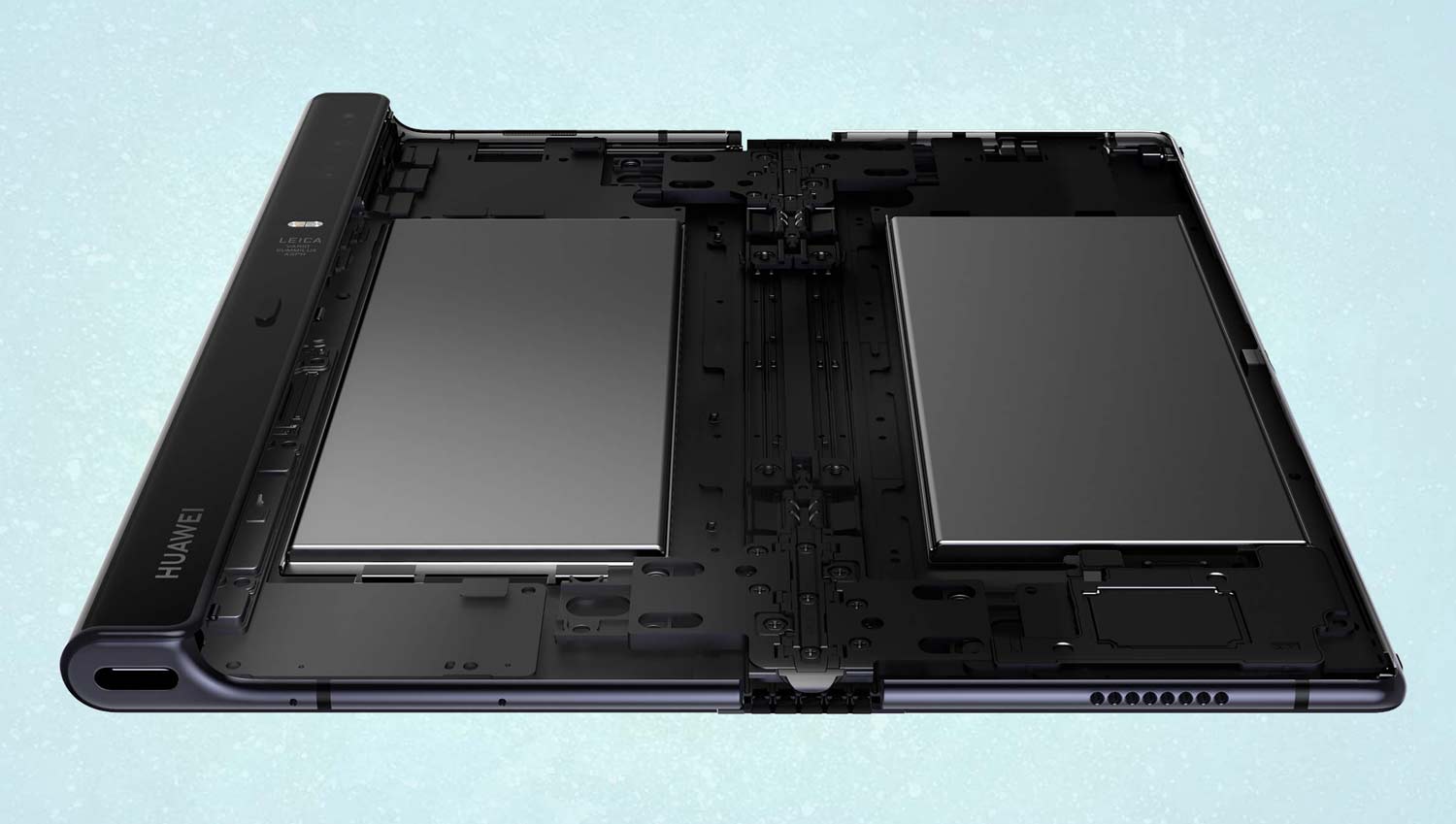
The Mate X boasts the bigger total battery, with its two power packs combining to form a 4,500 mAh power source. The Galaxy Fold, in contrast, offers a 4,380 mAh battery — bigger than anything you'll find in a Samsung device outside the Galaxy S10 5G's massive 4,500 mAh power pack, but short of what Huawei is packing into the Mate X.
We didn't yet run the Tom's Guide battery test on the Galaxy Fold. (We're waiting for a shipping version of the phone.) Anecdotally, though, we saw long battery life from Samsung's foldable. My colleague Mark Spoonauer unplugged the phone at 6:30 a.m. one morning and still had 60 percent battery life at 9:15 p.m. A more intensive day of use ran the battery down to 25 percent by 9 p.m. That bodes well for the Mate X's battery life.
Samsung is turning to another power management feature to set its Galaxy Fold apart from the competition. Like the Galaxy S10 phones, the foldable Samsung device supports Wireless PowerShare, a feature that lets you charge any Qi-capable device wirelessly by placing it on the back of the Samsung phone.
Huawei is countering with a fast-charging feature for the Mate X that will get the foldable up to 85 percent power after just a half hour of charging.
Special Features
So far, Samsung is emphasizing the multitasking aspect of the Galaxy Fold, and it's one of the more noteworthy benefits to the folding phone. The foldable-friendly version of Android powering the device lets you run three apps simultaneously. Your main app fills up the left two-thirds of the screen, while two other apps are stacked on top of each other on the right. You can drag-and-drop apps into different areas of the screen depending on which ones require your focus. A decent number of apps currently support multitasking, though app makers will have to add that functionality to make the feature truly useful.
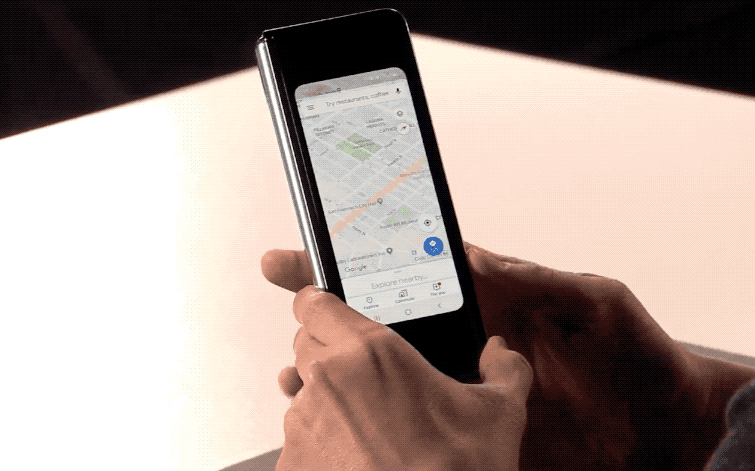
The Galaxy Fold also boasts a feature called App Continuity. Say you're looking at a map on the 4.6-inch front screen of the device. When you open up the Fold to get to the larger screen, the map will have already launched, showing you the location you had been looking at, only with more detail. Annoyingly, the feature doesn't work in reverse, unless you tweak a setting to keep the app running once you've folded up Samsung's phone.
We've only seen demos of the Mate X in action back when the phone was announced. At that point, Huawei had some tweaking to do: when we used the Mate X, there was a noticeable lag when switching modes, for instance. Still, apps like YouTube fill up the 8-inch screen, and since the unfolded display is nearly square, you can use the Mate X in either horizontal or vertical orientations.
When unfolded, the Mate X doesn't lie flat — there's a bar that props up the display. We found that when we placed the phone so that the bar was facing opposite of us, it made for a better typing experience on the Mate X's display.
Price and Availability
The Galaxy Fold is the less expensive option, though "less expensive" is relative in this case. Samsung's foldable phone costs $1,980 for the standard version. A model with 5G connectivity will come later and likely cost more.
The Mate X will cost €2,299 — more than $2,570 at the current exchange rate, though 5G connectivity will come standard with the Mate X.
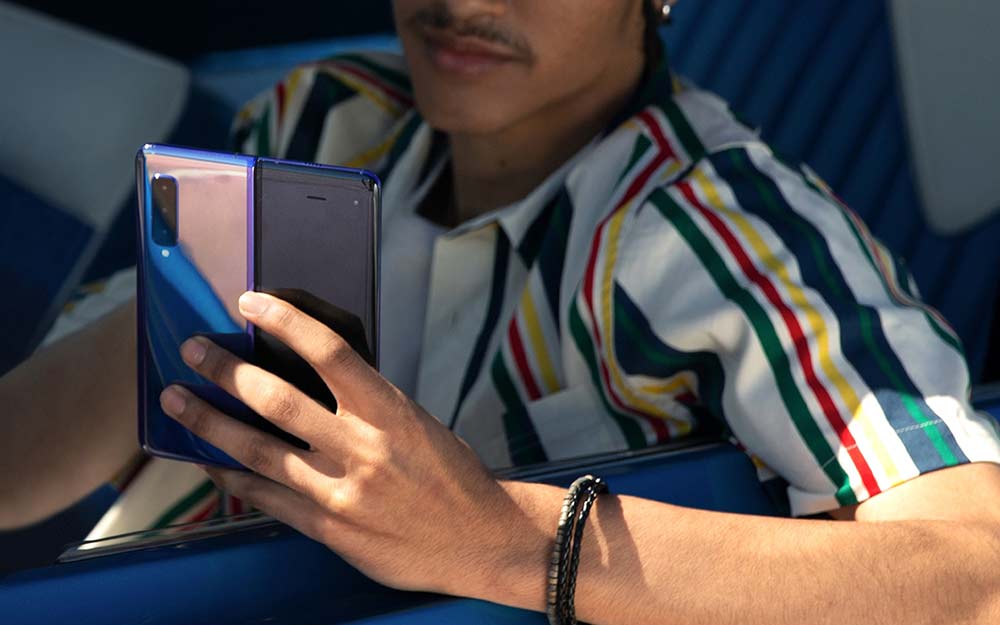
We thought the Galaxy Fold was going to beat the Mate X to the market, but the indefinite delay on the Fold's launch could mean the Mate X arrives first, especially if Samsung's investigation into the Fold's problems drags into June. You can stillpre-order the Galaxy Fold through Samsung. AT&T, T-Mobile and Best Buy are also offering the phone.
It's less clear if you'll be able to get the Mate X when it debuts in June, at least if you're in the U.S. Huawei has shied from releasing its devices in the U.S. ever since carriers in this country backed away from plans to sell the Mate 10 smartphone, reportedly after pressure from the U.S. government.
With the feds and Huawei at odds over the security of the Chinese phone maker's devices, it seems unlikely that the Mate X is going to buck that trend. So Samsung's Galaxy Fold could find itself without any competition from Huawei in the U.S., even with its delayed launch.
Outlook
At first glance, the Mate X seems to have an edge on the Galaxy Fold regarding hardware. You get a larger screen in both phone and tablet mode, a second display on the back when folded up, a larger battery and no gap between the screens when closed. Samsung seems to be touting a more polished software experience, and it could offer better overall performance.
It's hard to overlook the Fold's stumble out of the gate, even if Samsung is going to use the delayed launch to find ways that will keep users from running into the same issues that some reviewers faced with the Galaxy Fold's display. Samsung's caution is admirable, but with durability one of the key concerns for foldable phones — not just Samsung's device, but all products — this couldn't have been a worse start for the foldable phone era.
Assuming Samsung works through these initial problems, the Galaxy Fold may be holding the ultimate trump card over the Mate X, though — it should be more readily available, at least in the U.S. We’ll find out for sure once both foldable phones get closer to their new release dates.
Credit: Samsung; Huawei
Sign up to get the BEST of Tom's Guide direct to your inbox.
Get instant access to breaking news, the hottest reviews, great deals and helpful tips.
Philip Michaels is a Managing Editor at Tom's Guide. He's been covering personal technology since 1999 and was in the building when Steve Jobs showed off the iPhone for the first time. He's been evaluating smartphones since that first iPhone debuted in 2007, and he's been following phone carriers and smartphone plans since 2015. He has strong opinions about Apple, the Oakland Athletics, old movies and proper butchery techniques. Follow him at @PhilipMichaels.


